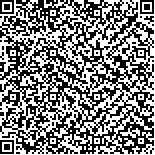附件
|
| 引用本文: | 赵军峰,李勋贵.巴丹吉林沙漠湖泊水离子空间复杂性分析.湖泊科学,2018,30(3):680-692. DOI:10.18307/2018.0310 |
| ZHAO Junfeng,LI Xungui.Spatial complexity of lake water ions in the Badain Jaran Desert. J. Lake Sci.2018,30(3):680-692. DOI:10.18307/2018.0310 |
|
| |
|
|
| 本文已被:浏览 6436次 下载 4502次 |

码上扫一扫! |
|
|
| 巴丹吉林沙漠湖泊水离子空间复杂性分析 |
|
赵军峰1,2, 李勋贵1,2
|
|
1.兰州大学资源环境学院西部环境教育部重点实验室, 兰州 730000;2.兰州大学干旱区与沙漠研究中心, 兰州 730000
|
|
| 摘要: |
| 为探讨巴丹吉林沙漠湖泊水离子的空间复杂性,本文采用滑动样本熵方法,将沙漠东南部115个湖泊的313组采样点分为两组(2009年9月和2010年9月为一组,2011年4月、2012年4月、2013年4月和2016年4月为一组),并计算采样点水化学离子的样本熵,分析其空间变化规律.结果表明,4月各个离子和TDS的空间复杂度大于9月;4月和9月TDS熵值和Na+、Cl-、K+熵值相关系数较高,TDS和Na+、Cl-、K+在空间上的复杂度变化趋势较为一致,且Na+、Cl-、K+、CO32-、HCO3-都是在西北部和东南角空间复杂度高,其他区域复杂度相对较低;Mg2+比同期其他离子空间复杂度低,其在采样Ⅰ区中间部分的复杂度较高;Mg2+和Ca2+在9月和4月空间复杂度相差较大,9月Ca2+在采样Ⅰ区西北部有一个复杂度较高的突变区域;除9月东南角出现较高熵值之外,SO42-空间复杂度分布趋势在4月和9月基本相同;对于离子熵值的季节性变化,气候条件是主导因素;在同月气候条件相似的情况下,影响可溶性离子熵值空间变化的主要因素是水源补给;4月和9月的可溶性离子熵值在研究区中间部分较低,说明该区水源补给量较大. |
| 关键词: 湖泊水离子 空间复杂性 滑动样本熵 巴丹吉林沙漠 |
| DOI:10.18307/2018.0310 |
| 分类号: |
| 基金项目:国家自然科学基金项目(41530745,51679115)和兰州大学中央高校基本科研业务费专项(lzujbky-2016-173)联合资助. |
|
| Spatial complexity of lake water ions in the Badain Jaran Desert |
|
ZHAO Junfeng1,2, LI Xungui1,2
|
|
1.Key Laboratory of Western China's Environmental Systems(Ministry of Education), College of Earth and Environmental Sciences, Lanzhou University, Lanzhou 730000, P. R. China;2.Research Center for Arid Region and Desert, Lanzhou University, Lanzhou 730000, P. R. China
|
| Abstract: |
| In order to investigate and compare the distribution characteristics of the spatial complexity of the lake water ions, the sliding sample entropy and spatial interpolation are employed in this study. The three hundred and thirteen sampling sites in one hundred and fifteen lakes are divided into two groups(one group includes September 2009 and September 2010, another group includes April 2011, April 2012, April 2013 and April 2016) to calculate entropy and analyze spatial complexity. The results show that the spatial complexity of each ion and TDS in April is larger than that in September. The correlation coefficients between the entropy values of TDS and Na+, Cl- and K+ are rather high in both April and September. The variation trend of spatial complexity of TDS is consistent with that of Na+, Cl- and K+. In September and April, the spatial complexities of Na+, Cl-, K+, CO32- and HCO3- are high in the northwest and southeast corner, but low elsewhere. The ion of Mg2+ has less complexity than other ions in the same month, but has higher complexity in the middle part of the sampling RegionⅠ. The spatial complexity of Mg2+ and Ca2+ is quite different in September and April. Ca2+ has a mutation high interval of ion complexity in the northwestward of sampling RegionⅠ in September compared with the lows value of ion complexity outside the interval. The spatial complexity trend of SO42- is almost the same in April and September; while there is no high values of entropy in the southeast corner. Climate condition is the dominant factor for the seasonal variation of ion's entropy. In the same month with the same climate conditions, the water source recharge is the main factor affecting the spatial variation of entropy of the soluble ions. In April and September, the low entropy values of soluble ions in the middle of the study area indicate that there exists large water supply. |
| Key words: Lake water ions spatial complexity sliding sample entropy Badain Jaran Desert |
|
|
|
|